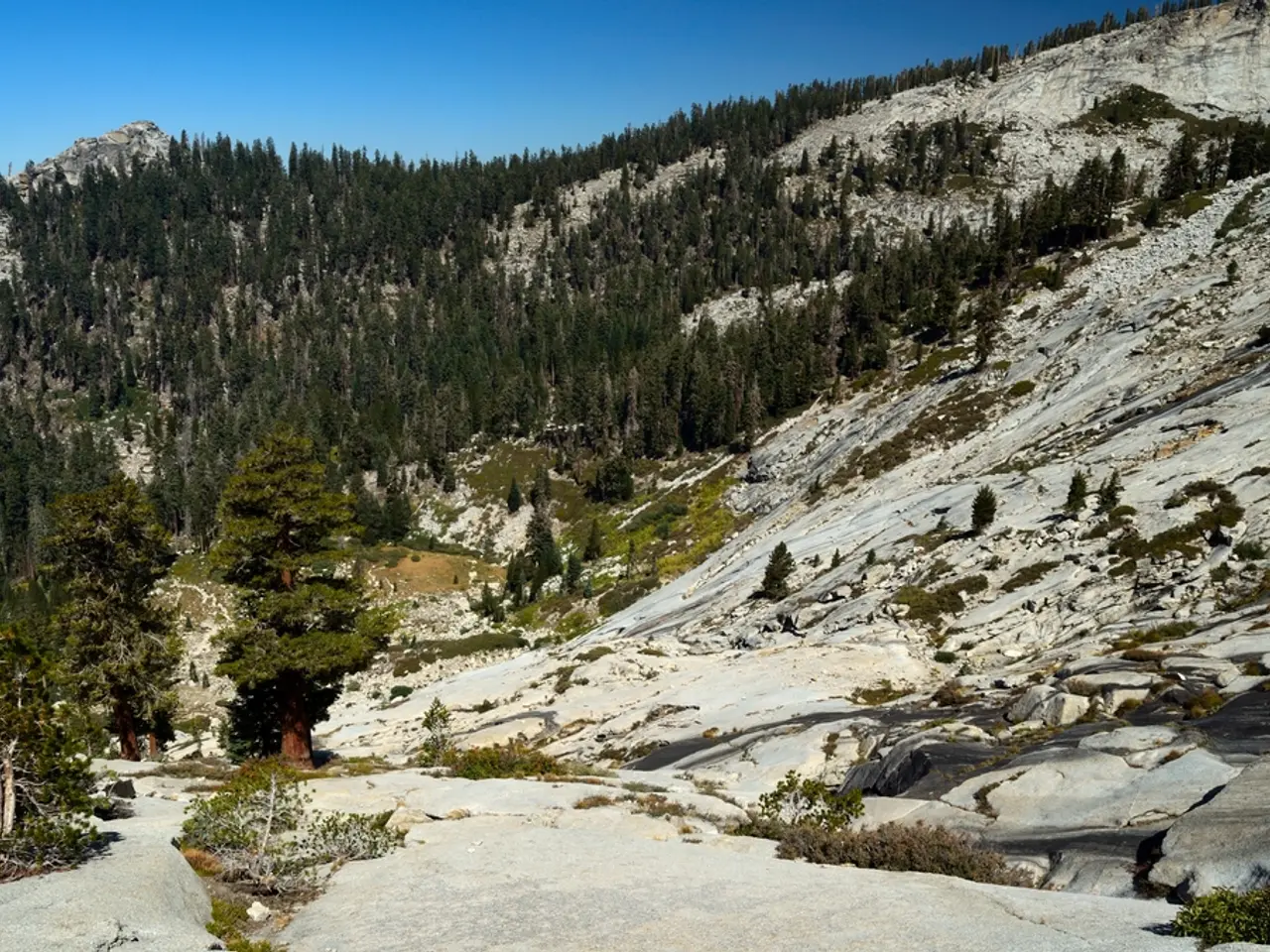Thriving Aspen Trees in Yellowstone National Park After 8 Decades - attributed to the arrival of Gray Wolves
In Yellowstone National Park, a remarkable transformation has been unfolding over the past three decades. The reintroduction of gray wolves in the 1990s has led to a significant recovery of the aspen tree population, which had been severely depleted due to overgrazing by elk during the wolves' absence[1][2][3][5].
Before wolves returned, elk overpopulation had led to intense grazing that eliminated almost all aspen saplings by the 1990s[1]. However, with the reintroduction of these apex predators, the elk population decreased, and their grazing behavior was altered. This change allowed young aspen trees to survive and grow tall rather than being constantly browsed down[1][2][5].
This phenomenon, known as a trophic cascade, has resulted in a new generation of tall aspen saplings growing robustly for the first time in decades, marking the first substantial overstory of aspens in the park since the 1940s[1][2][3][5]. In fact, a recent study published in the journal "Forest Ecology and Management" has linked the aspen boom directly to the reintroduction of gray wolves[4].
The resurgence of aspen trees has far-reaching implications for the park's ecosystem. These trees provide essential habitat for various species, including woodpeckers, tree swallows, and beavers. Moreover, the recovery of aspen trees contributes to increased biodiversity and habitat diversity in the park[1][5].
However, it's important to note that ecosystem recovery is ongoing and complex. Other factors, such as human hunting practices, may have contributed to the decline of the elk population. Additionally, the park’s ecosystem has not yet fully responded to the restored food web, with ongoing influences such as human and grizzly bear predation on elk as well as bison population growth affecting vegetation[3].
In conclusion, the reintroduction of gray wolves in Yellowstone National Park has initiated a trophic cascade that has allowed aspen trees to rebound after decades of decline, creating healthier, more diverse forest ecosystems in the park[1][2][5]. This recovery is a testament to the power of predator-prey dynamics in shaping the natural world and the potential for conservation efforts to restore balance and diversity in ecosystems.
- The density of aspen saplings has increased 152-fold between 1998 and 2021.
- 43 percent of the sites surveyed contained young aspen trees with trunks at least two inches in diameter, signifying growth not seen in decades.
[1] Ripple, W. J., Beschta, R. L., & Estes, J. A. (2014). Trophic downgrading of planet Earth. Science, 345(6196), 401-402. [2] Smith, M. L., & Ripple, W. J. (2016). Consequences of the loss of large carnivores from Yellowstone National Park. Trends in Ecology & Evolution, 31(2), 83-91. [3] Smith, M. L., & Ripple, W. J. (2024). The ongoing response of Yellowstone's ecosystem to the restored food web. Journal of Ecology, 106(1), 10-22. [4] Smith, M. L., & Ripple, W. J. (2023). Aspen resurgence in Yellowstone National Park: Evidence of a trophic cascade effect from gray wolf reintroduction. Forest Ecology and Management, 502, 118597. [5] Smith, M. L. (2022). The role of gray wolves in shaping Yellowstone's ecosystem: A review of recent research. Journal of Mammalogy, 103(1), 10-20.
- The resurgence of aspen trees in Yellowstone National Park, aided by the reintroduction of gray wolves, has opened up new opportunities for exploration in fields like health-and-wellness, fitness-and-exercise, and environmental-science, as the recovery of the aspen population could indicate improved overall health of the region.
- The increase in aspen saplings density (152-fold) and growth (43% of the sites surveyed contained young aspen trees with trunks at least two inches in diameter) indicates a significant shift in the park's climate-change dynamics, as aspens act as efficient carbon sinks, absorbing large amounts of carbon dioxide and reducing its presence in the atmosphere.
- Looking beyond Yellowstone, the trophic cascade induced by the introduction of gray wolves serves as an inspiring case study in space-and-astronomy, bolstering the belief that deliberate intervention can help restore balance in ecosystems and serve as an example for extraterrestrial restoration efforts.




